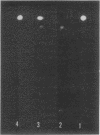Abstract
Of 10 Penicillium species reported to cause blue-eye disease of corn, four (P. martensii, P. palitans, P. cyclopium, P. puberulum) were found capable of producing the mycotoxin penicillic acid on various agricultural commodities. Commodities with high protein contents did not support toxin synthesis. The extent of toxin production varied with the strain of mold, the commodity, and the temperature; low temperatures (1 to 10 C) favored toxin accumulation.
Full text
PDF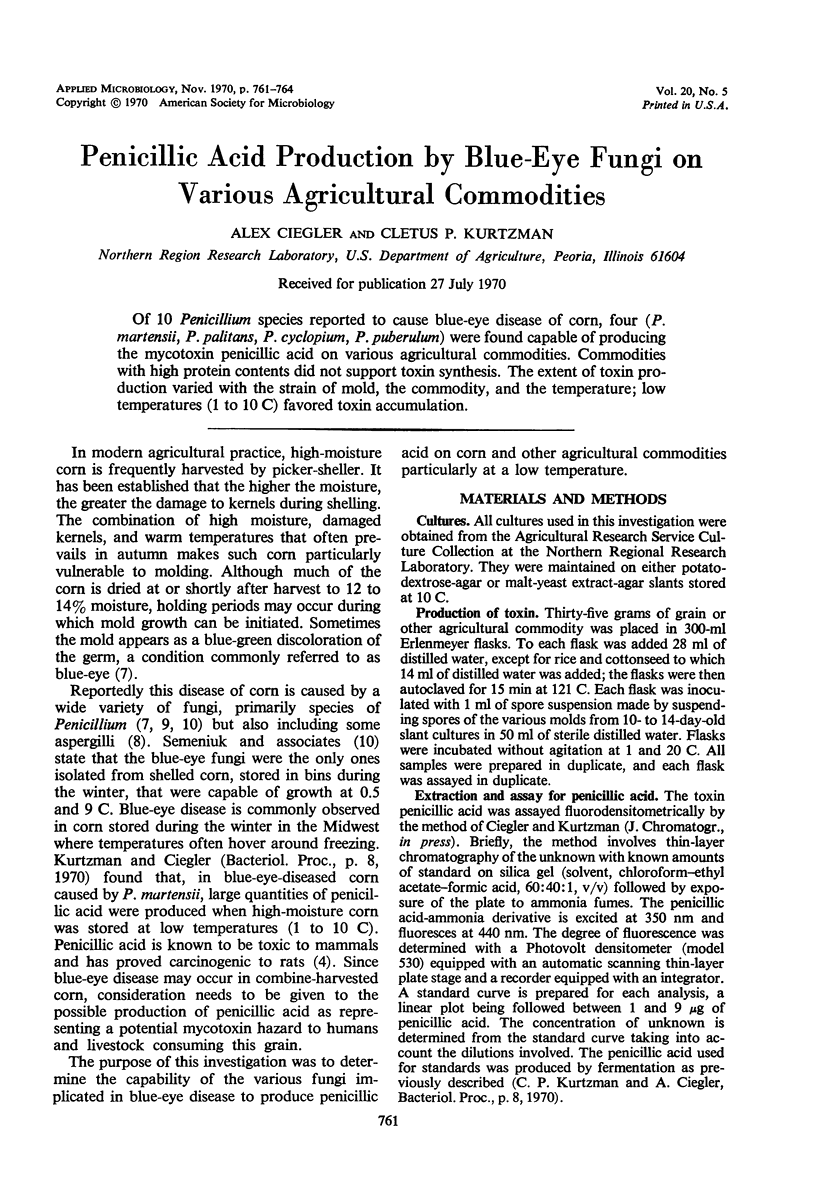
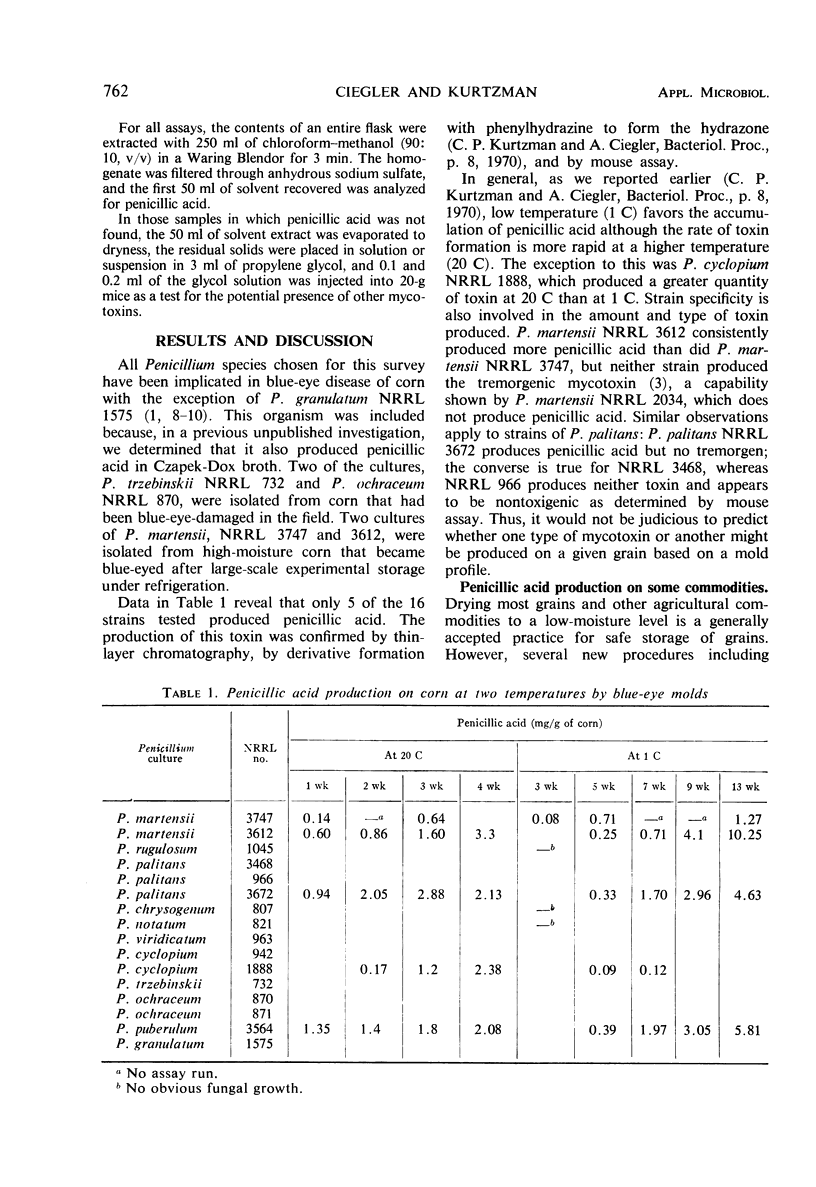
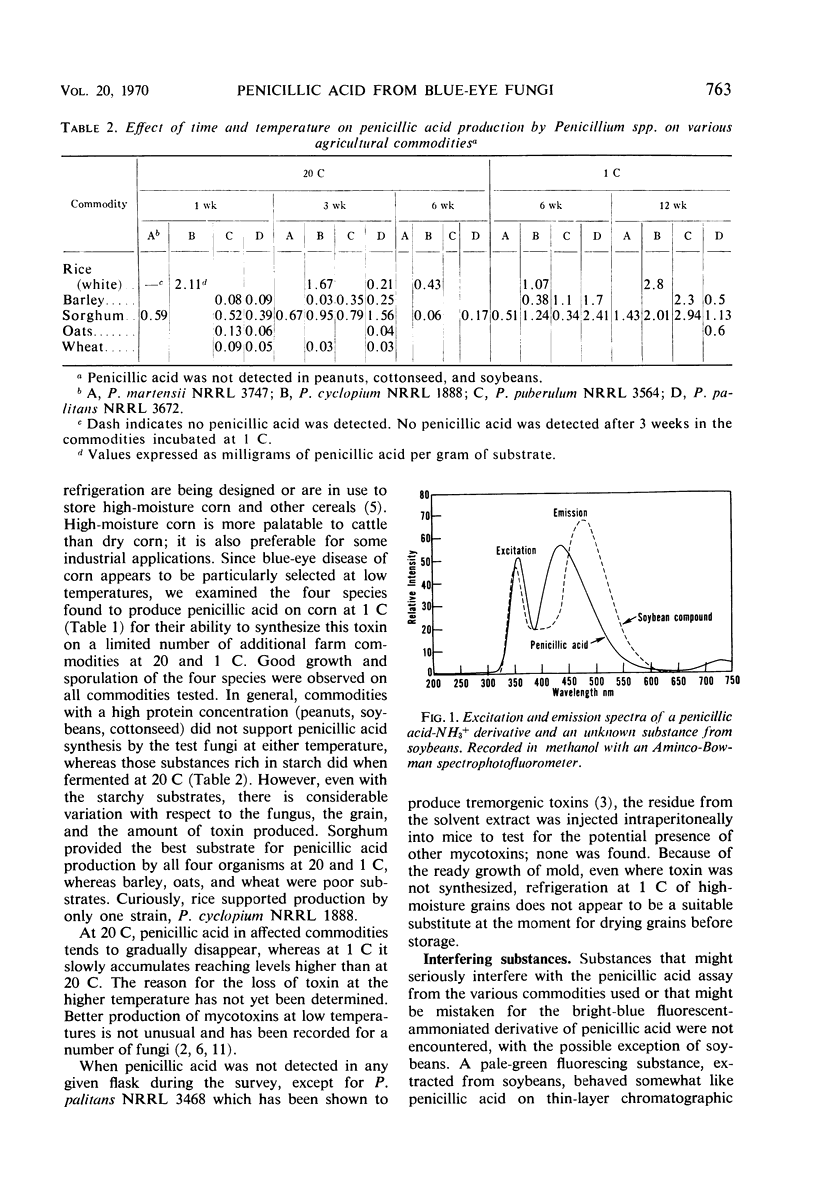
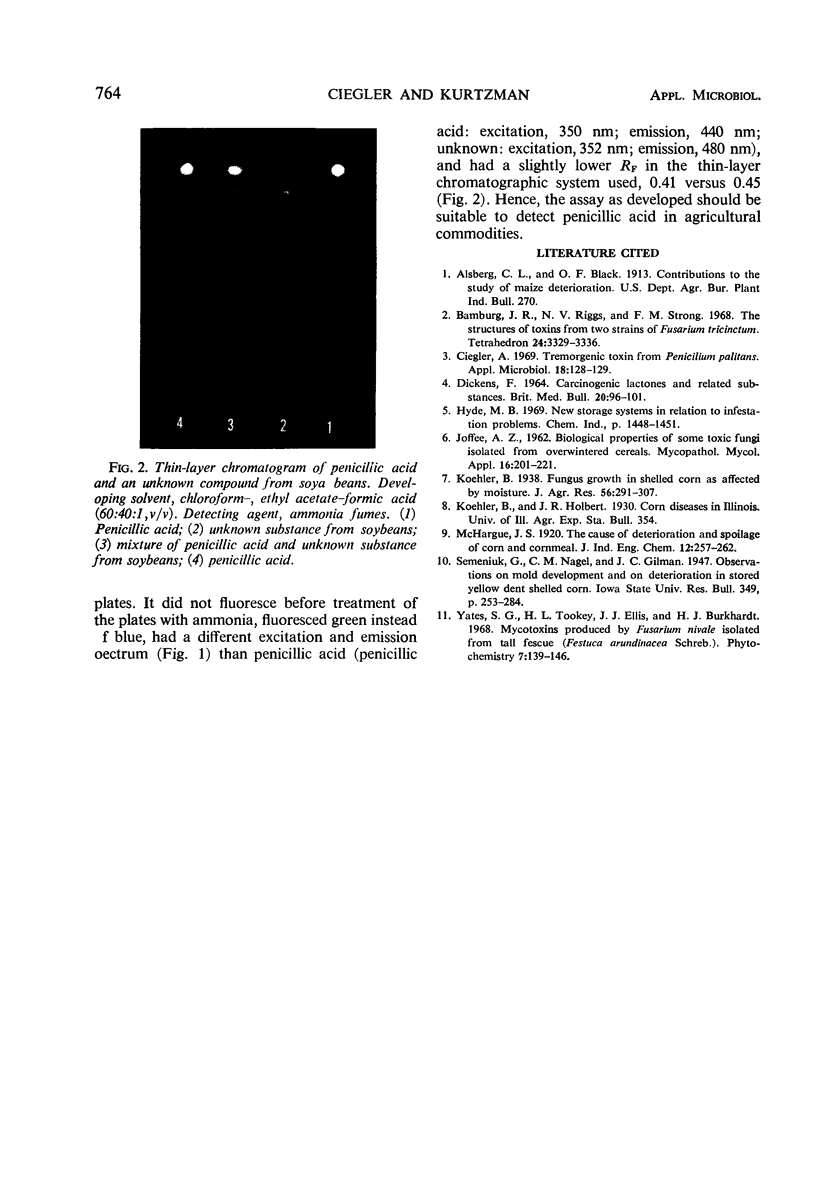
Images in this article
Selected References
These references are in PubMed. This may not be the complete list of references from this article.
- Bamburg J. R., Riggs N. V., Strong F. M. The structures of toxins from two strains of Fusarium tricinctum. Tetrahedron. 1968 Apr;24(8):3329–3336. doi: 10.1016/s0040-4020(01)92631-6. [DOI] [PubMed] [Google Scholar]
- Ciegler A. Tremorgenic toxin from Penicillium palitans. Appl Microbiol. 1969 Jul;18(1):128–129. doi: 10.1128/am.18.1.128-129.1969. [DOI] [PMC free article] [PubMed] [Google Scholar]
- DICKENS F. CARCINOGENIC LACTONES AND RELATED SUBSTANCES. Br Med Bull. 1964 May;20:96–101. doi: 10.1093/oxfordjournals.bmb.a070324. [DOI] [PubMed] [Google Scholar]
- Hyde M. B. New storage systems in relation to infestation problems. Chem Ind. 1969 Oct 11;41:1448–1451. [PubMed] [Google Scholar]



